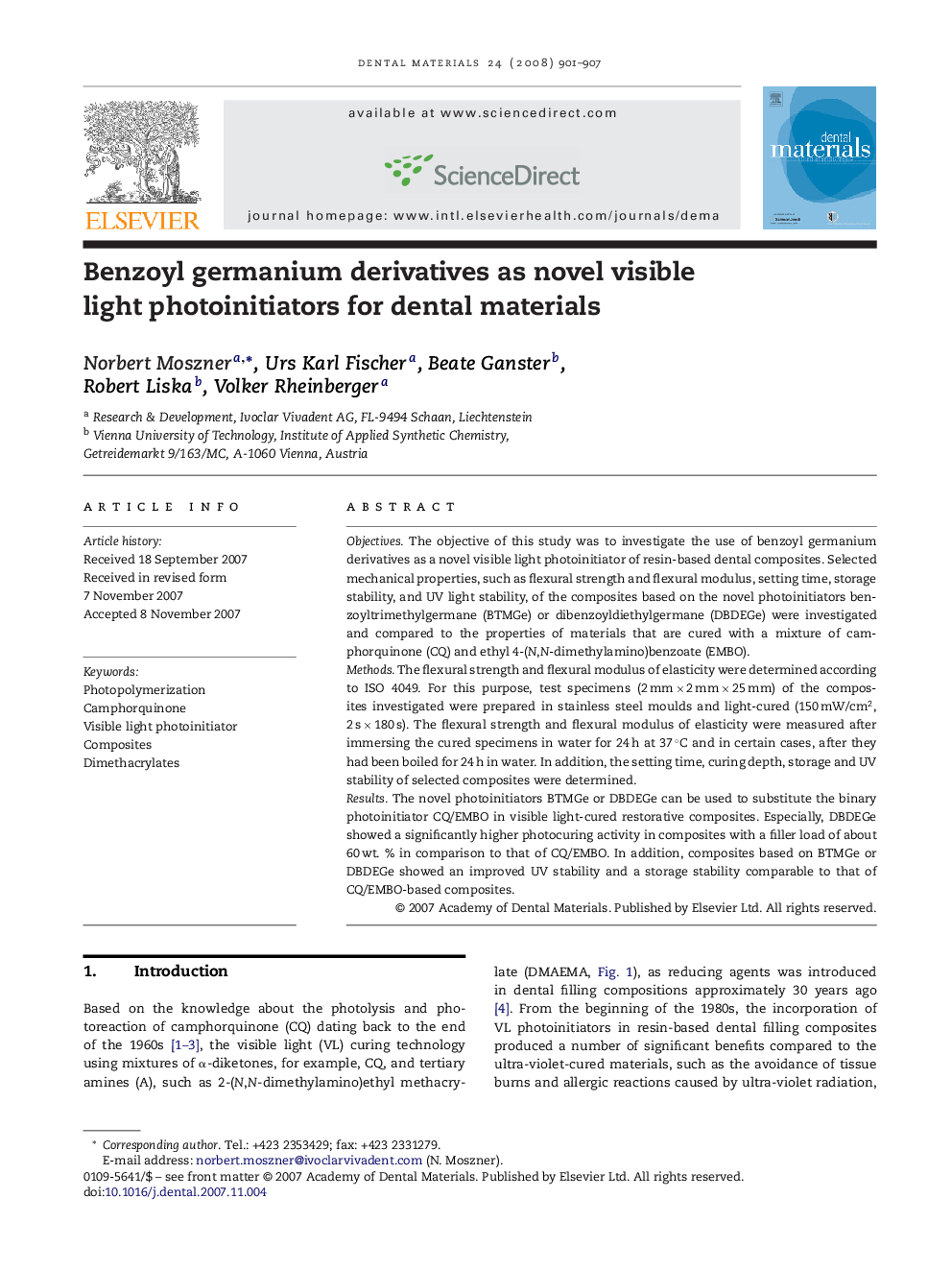| Article ID | Journal | Published Year | Pages | File Type |
|---|---|---|---|---|
| 1422984 | Dental Materials | 2008 | 7 Pages |
ObjectivesThe objective of this study was to investigate the use of benzoyl germanium derivatives as a novel visible light photoinitiator of resin-based dental composites. Selected mechanical properties, such as flexural strength and flexural modulus, setting time, storage stability, and UV light stability, of the composites based on the novel photoinitiators benzoyltrimethylgermane (BTMGe) or dibenzoyldiethylgermane (DBDEGe) were investigated and compared to the properties of materials that are cured with a mixture of camphorquinone (CQ) and ethyl 4-(N,N-dimethylamino)benzoate (EMBO).MethodsThe flexural strength and flexural modulus of elasticity were determined according to ISO 4049. For this purpose, test specimens (2 mm × 2 mm × 25 mm) of the composites investigated were prepared in stainless steel moulds and light-cured (150 mW/cm2, 2 s × 180 s). The flexural strength and flexural modulus of elasticity were measured after immersing the cured specimens in water for 24 h at 37 °C and in certain cases, after they had been boiled for 24 h in water. In addition, the setting time, curing depth, storage and UV stability of selected composites were determined.ResultsThe novel photoinitiators BTMGe or DBDEGe can be used to substitute the binary photoinitiator CQ/EMBO in visible light-cured restorative composites. Especially, DBDEGe showed a significantly higher photocuring activity in composites with a filler load of about 60 wt. % in comparison to that of CQ/EMBO. In addition, composites based on BTMGe or DBDEGe showed an improved UV stability and a storage stability comparable to that of CQ/EMBO-based composites.
